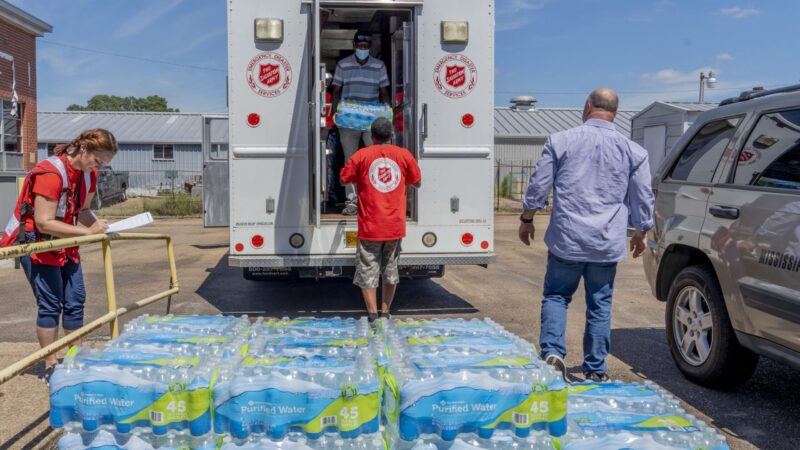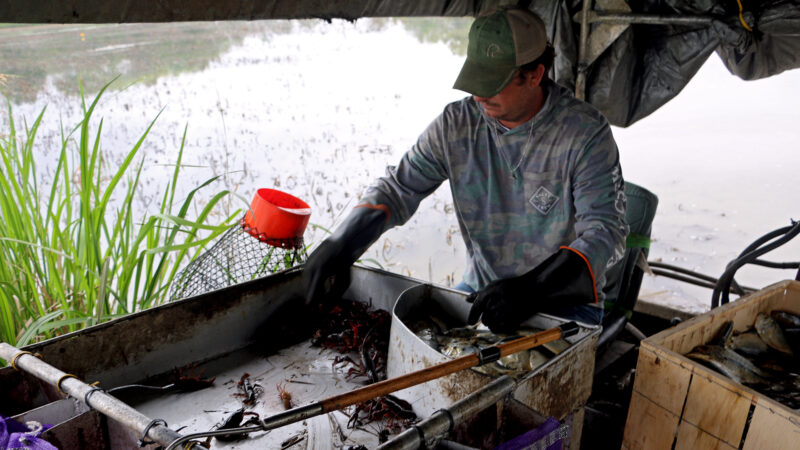The Private Eye Program
What’s common to all academic subjects? Well … thinking. “Critical thinking” is a buzzword for a reason, regardless of whether educators think today’s students do it well enough: it’s basic to what students are meant to do in school. But can you actually teach thinking? From the Southern Education Desk at WBHM, Dan Carsen reports on an innovative program trying to do just that:
Teachers sit through lots of professional development workshops, some helpful, some not so much. About 20 Alabama educators in a classroom at Leeds High School, 20 miles east of Birmingham, clearly think this day’s session on The Private Eye program is of the helpful variety. Normally, training workshops are grouped by grade or subject. But this group is made of special ed teachers, administrators, and educators of all subjects, from first grade up through college.
That’s because the Private Eye program is not meant to teach any one subject, but something at the root of every subject: thinking itself.
Joan Dawson, one of the presenters and co-director of the Alabama Hands-On Activity Science Program (ALAHASP) at UAB explains, “It helps people build even better brains than they already have. They are able to take what they know, and apply it immediately into absolutely new ways of learning.”
But how do you do that?
The Private Eye uses inexpensive tools and a deceptively simple questioning approach based on neuroscience, which shows our brains are both highly plastic and “wired for analogy.” In other words, we learn by observing and then relating those observations to things we already know, and then our brain rewires itself with a new understanding.
So first, kids closely observe the world in a new way, through jeweler’s magnifying lenses called loupes (pronounced “LOOPS”). As one teacher put it, “cliché is stripped away,” and a sense of wonder ensues as magnification seems to change everyday things into something else entirely. But that’s just the beginning. Regardless of subject, students are nudged to make comparisons, and then more comparisons, between what they’re seeing and things they’re already familiar with. This process is repeated, often 10 times, partly to forge mental connections, partly because it shows there’s no wrong answer, that it’s a creative process.
The central, repeated question of the program is “What else does it remind you of?” It’s really an approach, a habit of mind. Beverly Radford, the other presenter and co-director of “target=”New_Window”>ALAHASP, explains that it applies to every academic area and beyond:
“We’ve even done this for professionals, like for Leadership Birmingham. Every single one of them thought it was created for their areas.”
Terri Lee Gibson, who teaches math at Leeds High, says, “I love the creativity, and I think it’ll get the kids thinking more deeply, and having them look at something from a different perspective.”
She plans to use the approach to get kids thinking about what geometric shapes and graphs of quadratic functions resemble in the real world. It’s easier to jump from there to how that math can be used in the design of real things.
Speaking of the need for higher order thinking in the real world, Beverly Radford says it’s vital to train students to be better thinkers:
“… what they have to become are what we call ‘baloney detectors.’ They have to use evidence to make their decisions, and not everybody knows how to find evidence to make those good decisions. And they’re being prepared for jobs that haven’t even been created yet. So again, it’s not about factoids, it’s about how do you analyze, how do you think.”
Making mental connections between things makes actual neurological connections in the brain. And since we’re talking analogies, you might say the Private Eye program is trying to improve students’ “hardware” through brain-building exercise so they better upload the “software” of say, ninth-grade social studies. Or just about anything else they come across.
Alabama’s racial, ethnic health disparities are ‘more severe’ than other states, report says
Data from the Commonwealth Fund show that the quality of care people receive and their health outcomes worsened because of the COVID-19 pandemic.
What’s your favorite thing about Alabama?
That's the question we put to those at our recent News and Brews community pop-ups at Hop City and Saturn in Birmingham.
Q&A: A former New Orleans police chief says it’s time the U.S. changes its marijuana policy
Ronal Serpas is one of 32 law enforcement leaders who signed a letter sent to President Biden in support of moving marijuana to a Schedule III drug.
How food stamps could play a key role in fixing Jackson’s broken water system
JXN Water's affordability plan aims to raise much-needed revenue while offering discounts to customers in need, but it is currently tied up in court.
Alabama mine cited for federal safety violations since home explosion led to grandfather’s death, grandson’s injuries
Following a home explosion that killed one and critically injured another, residents want to know more about the mine under their community. So far, their questions have largely gone unanswered.
Crawfish prices are finally dropping, but farmers and fishers are still struggling
Last year’s devastating drought in Louisiana killed off large crops of crawfish, leading to a tough season for farmers, fishers and seafood lovers.







